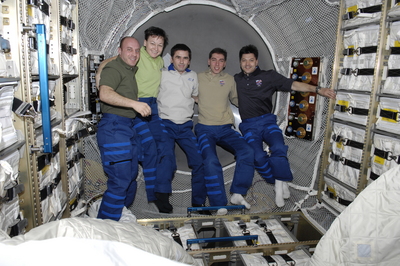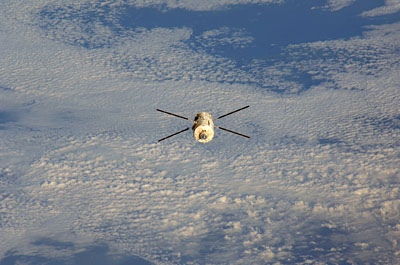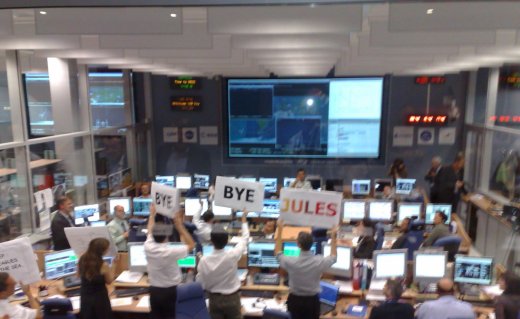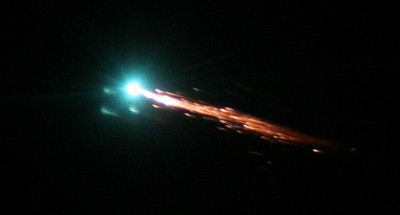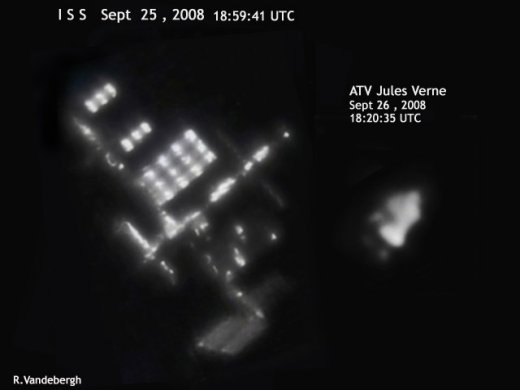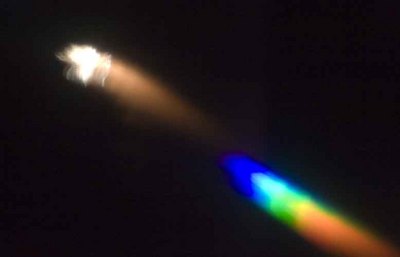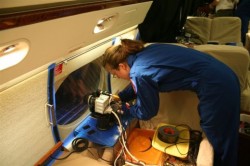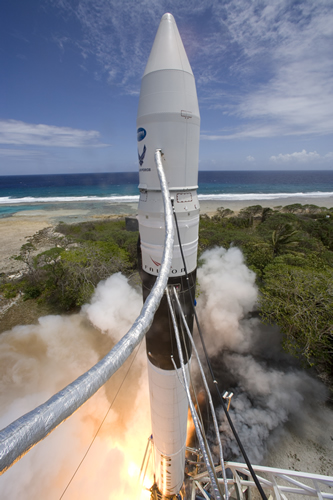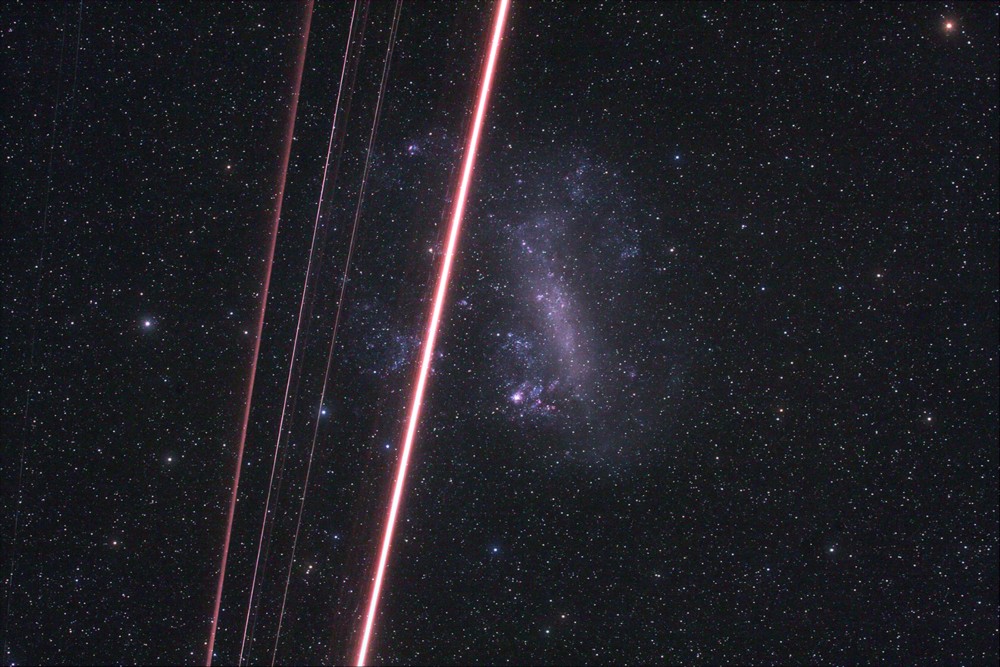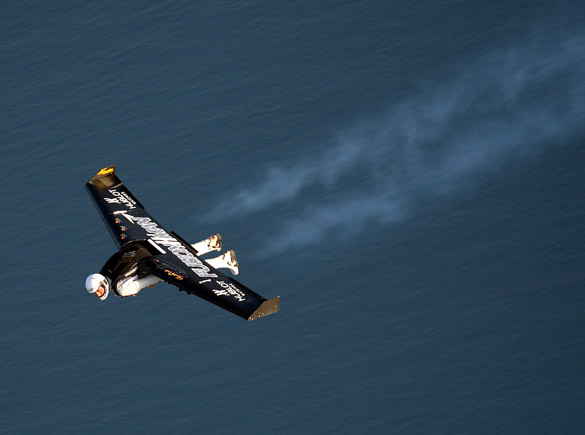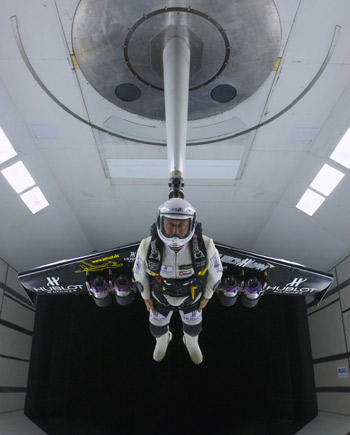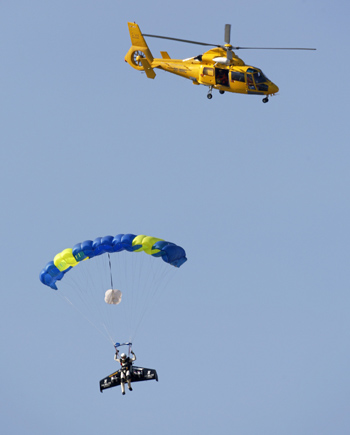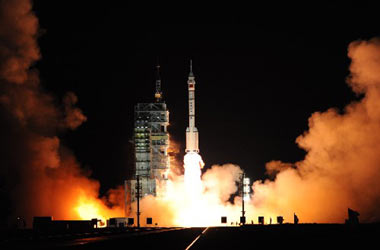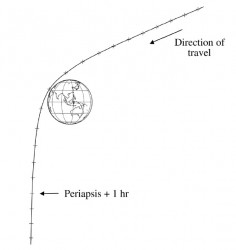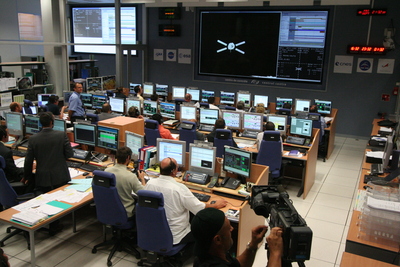[/caption]
While imaging the Large Magellanic Cloud, astrophotographer Doug Robertson got a real surprise when he went to process his data…. He’d accidentally recorded the uncontrolled return of the intermediate stage of a recent Russian rocket launch that just put three GLOSNASS satellites into orbit.
Eyewitnesses in Adelaide, Australia were astounded when a huge fireball lit up the skies shortly after midnight local time. The initial response was believed to be attributed to meteoric activity, but the 45 second event broke into several pieces and traveled along a parallel trajectory. Hearing the news, Robertson checked his photographic data and sure enough, during the time stamp of 12:12:38am, he’d caught the event. Like all good astronomers, the initial reaction is to immediately report and wait for an answer.
According to the Publicity Officer of the Astronomical Society of South Australia, Tony Beresford: “Last night at around 00:18CST sept 27 or 14:48 UT Sept. 26, an intermediate stage of a recent Russian launch that put 3 GLOSNASS satellites into orbit, re-entered the atmosphere and became visible travelling N-S over Adelaide. I had a full report from a person who saw the pass from Hallett Cove immediately after the event. It was an expected uncontrolled re-entry. The rocket stage had broken into several pieces. This aspect seems similar to other re-entries reported to me over the years. It took nearly a minute to pass over. A Sunday Mail reporter who rang this morning said they had a least a dozen reports. Some of the reports incorrectly used the term “meteor shower” to describe what they saw. Some meteors could give the same phenomena of multiple bodies on parallel paths, but that is not a meteor shower!!”
Is returning “space junk” a problem? You bet. In a very comprehensive article done by Nancy a few months ago called Space Debris Illustrated: The Problem in Pictures, she clearly illustrated how spent booster stages and discards from spacecraft could turn into a serious problem for future spaceflight if left unmonitored and uncontrolled. While the Russian return was expected, it’s still just another indicator of a mounting problem – inactive space hardware in orbit around the Earth .
According to NASA Shuttle program director John Shannon, “Next month’s shuttle flight to the Hubble Space Telescope faces an increased risk of getting hit by space junk because it will be in a higher, more littered orbit than usual. New number-crunching puts the odds of a catastrophic strike by orbital debris including bits of space junk at about 1-in-185 during Atlantis’ upcoming mission to Hubble. That compares to 1-in-300 odds for a shuttle flight to the International Space Station.”
Thankfully for everyone concerned there was no impact on the Shenzhou-7 mission – just a little late night excitement. Said Robertson, “Unfortunately I didn’t witness this naked eye. But as you see that main fragment/track looks extremely bright. Although rough, the crop clearly shows the number of fragments/debris surrounding the brighter tracks – reminded me off the shuttle disaster a few years ago. Glad it wasn’t anything to do with the manned Chinese mission. Wish I had put down my coffee and stepped outside a bit earlier to see it!”
Many thanks to AORAIA member, Doug Roberston for this fine catch!

